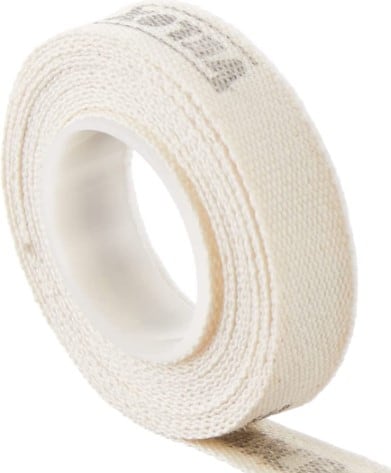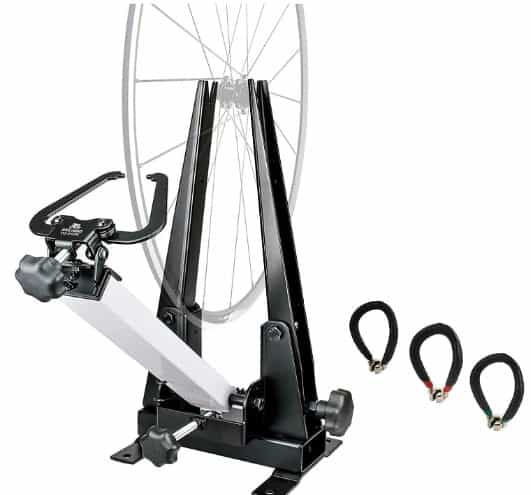Nothing annoys or inconveniences a cyclist like a flat tire. Whether it happens overnight or in the course of a trip, it’s something that takes away the joy of cycling. But why does my bike tire keeps going flat?
Bike tires mostly go flat due to a puncture, which could affect the outer tube surface, inner tube surface, or the sidewall, as I’ll explain later. But still, issues like a blowout from over-inflation, valve failure, worn-out rim tape, and a tube or tire wear can also lead to a flat tire.
Because of these issues, it’s impossible to ride your bike normally. Or worse, you could end up damaging the rim or wearing out the tire further.
Lucky of you, these issues are fixable, and I’m going to explain how to go about it.
Remember, knowing how to diagnose a tire problem and fixing it saves you both time and money. So, it’s worth a try.
Let’s get into the details.

Why Does My Bike Tire Keep Going Flat? Possible Reasons and Solutions
Below are seven reasons why your bike tire keeps going flat and what you can do to fix that:
1. Outer Surface Tube Puncture
If a sharp object penetrates the tire and reaches the tube, it could puncture it (the tube). So, watch out for foreign objects like glass pieces, goat heads, debris, or sharp rocks.
Remember, the object could also have fallen between the tire and the tube. So, as long as it is stuck there, it could puncture the tube’s outer surface and result in a flat tire.
The Solution – Swipe your fingers gently along your tire and tube to remove any sharp foreign object.
You can also use a tire liner like the Slime 20093 Tube Protector to protect your bike tube against sharp foreign objects in the future.
But if you realize that the tire is extra thin and features so many slits, replace it with a puncture-resistant option.
2. Inner Surface Tube Puncture
Over-inflating your bike tire is never a good thing. It exposes the inner tube to the rim’s sharp edges and spoke nipples, resulting in tire inflation.
The Solution – Always inflate your tire correctly. Don’t over-pump it.
And to ensure that the rim edges or spoke nipples don’t puncture the tube, consider using anti-puncture rim strips.
In this case, the Kenda Bicycle Rubber Rim Strips are a fantastic choice for protecting your inner tube against puncture.
3. Pinch Bite (Snake Bite or Sidewall Puncture)
While an over-inflation causes inner surface tube puncture, under-inflation can cause a pinch-bite, also known as a snake bite or sidewall puncture.
The problem with under-pumping your tire is that you expose your sidewall to pinching by the rim’s sharp edges. That usually happens when you hit something like a pothole or bump.
Once your side walls get pinched, air will start to escape from the tube.
The Solution – Always inflate your bike tire as recommended by the manufacturer. So, ensure you maintain the correct tire pressure.
4. Worn Out Rim Tape
The work of the rim tape is to protect your tube from puncture. However, you cannot expect it to do so if it’s worn out.
A worn-out rim tape won’t cover the spoke holes correctly, exposing the tube to puncturing by the spoke nipples.
The Solution – If the existing rim tape is worn out or thin, you should get a new one. You should ensure the replacement is wide enough and puncture-resistant, just like the Velox Rim Tape.

5. Tire Blowout
A blowout is simply a tire explosion, and it’s primarily due to over-pumping your tire. But still, if you damage the tube when changing it or if the fenders or discs rub against the tire, it could result in a blowout.
The Solution – Check for signs of tire bulge, especially on the sidewalls. Once you notice any, replace the tube right away.
6. Valve Failure
Remember, if debris gets stuck in the valve, it will cause it to leak some air. Also, a damaged valve stem can cause an air leak.
The Solution – If the valve is faulty or just broken, replace it.
7. Tube or Tire Wear
You cannot expect the tire to retain its tube pressure if it’s worn out. Understandably, bike tires have a lifespan which is about 1,000-3,000 miles.
So, once your bike tire goes beyond 3,000 miles, it can start deflating.
The Solution – Replace a bike tire that has exceeds its lifespan (3,000 miles).
Why Do My Bike Tire Keeps Going Flat When Not In Use?
It’s worth noting that bike tires naturally deflate, though slowly, when not in use.
Do you know why? Well, that’s because of a natural process called diffusion.
Diffusion is when molecules move from higher pressure (low volume) area to low pressure (high volume) area. In our case, we are talking about air molecules.
When your bike is not in use, the tires experience a higher internal pressure and low volume. So, diffusion encourages the air molecules to escape to the outside, where the pressure is low, but the volume is high, resulting in tire deflation.
So, that’s how your tire loses air when not in use. On average, tires lose 1-2 PSI (pinch per square inch) per day due to diffusion.
Why Does My Bike Tire Keeps Going Flat With No Puncture?
As discussed, it’s irrefutable that most tire flats are due to tire or tube puncture. So, should you worry when there is no puncture, and the tire perpetually deflates?
I would say yes, and that’s because there could be an underlying serious problem with either the tire or the valve.
Here are the issues you have to watch out for:
a) Pinhole Leak
If a thin sharp object becomes embedded in your tire and you happen to ride your bike, the object will make narrow holes into the tube, resulting in air escape. That’s what we call a pinhole leak, and it mainly affects pneumatic tires.
The Solution – Inspect your pneumatic tire inside to see if there is a foreign object and remove it.
b) Rim deformation
A bent rim is never a good thing. If your bike rim bends in such a way that it affects the bead, air will escape. Note that the more the rim deformation, the more the air leak and vice versa.
Overall, this issue is common with tubeless tires.
The Solution – Inspect the shape of the rim to ensure it’s perfectly round. If not, then true the bike wheel, and you can do it with a truing stand like the BIKEHAND Bicycle Wheel Truing Stand (View on Amazon).

c) Burping
If you apply excess lateral pressure or knock something, the bead may temporarily detach from the bike rim. While this may go unnoticed in a pneumatic tire, air escapes noticeably in tubeless tires.
We call it burping, and it’s common when using low-quality tubeless tires.
The Solution – Burping is not as severe as most flat tire issues. So, you can always re-pump the tire after a burp and continue cycling.
But if the problem persists or you want a long-term solution, replace your tubeless tires with quality options.
d) Damaged or Faulty Valve
If the valve is either damaged or faulty, the tire will go flat without a puncture.
The Solution – Replace the valve if it’s broken or just faulty. It’s essential, however, that you know your valve. Determine if it’s a Schrader or Presta or any other type.
How to Fix a Flat Bike Tire
Here’s a simple DIY guide for fixing a flat tire:
- Open up the bike brakes. You can, however, skip this step if your bike features disc brakes.
- Loosen the nuts that hold the wheel to remove it (the wheel) from the bike frame.
- Remove the tire and the flat tube from the rim to determine the extent of the puncture.
- If the puncture is small, consider sealing it with a tube sealant like Slime 10003 Tube Sealant.
- But if the puncture is extreme, replace both the tire and the tube or get a quality tubeless tire.
- Now return the tire and the wheel as they were before, and the bike will be ready for the next ride.
How to Flatten a Tire without Someone Knowing
I usually don’t advise my readers to harm something as valuable as a bike. So, the tips I’m going to share here are only for knowing how someone else can flatten your bike tire.
Here are the two popular means they use:
- Pocket knife: Here, you hold your tire between your legs and start making tiny radial incisions on the side. After that, drive the knife in at an angle.
- Small sharp nail: Here, you need to firmly position a sharp nail next to the tire while the bike is parked. Once the bicycle starts moving, it’ll run over the nail, only to be punctured undetected.
Closing Thought:
Now you know why your bike tire keeps going flat. You can therefore watch out for any of the reasons discussed and fix them accordingly. Hopefully, that’ll help you stop the flattening and start enjoying cycling more.